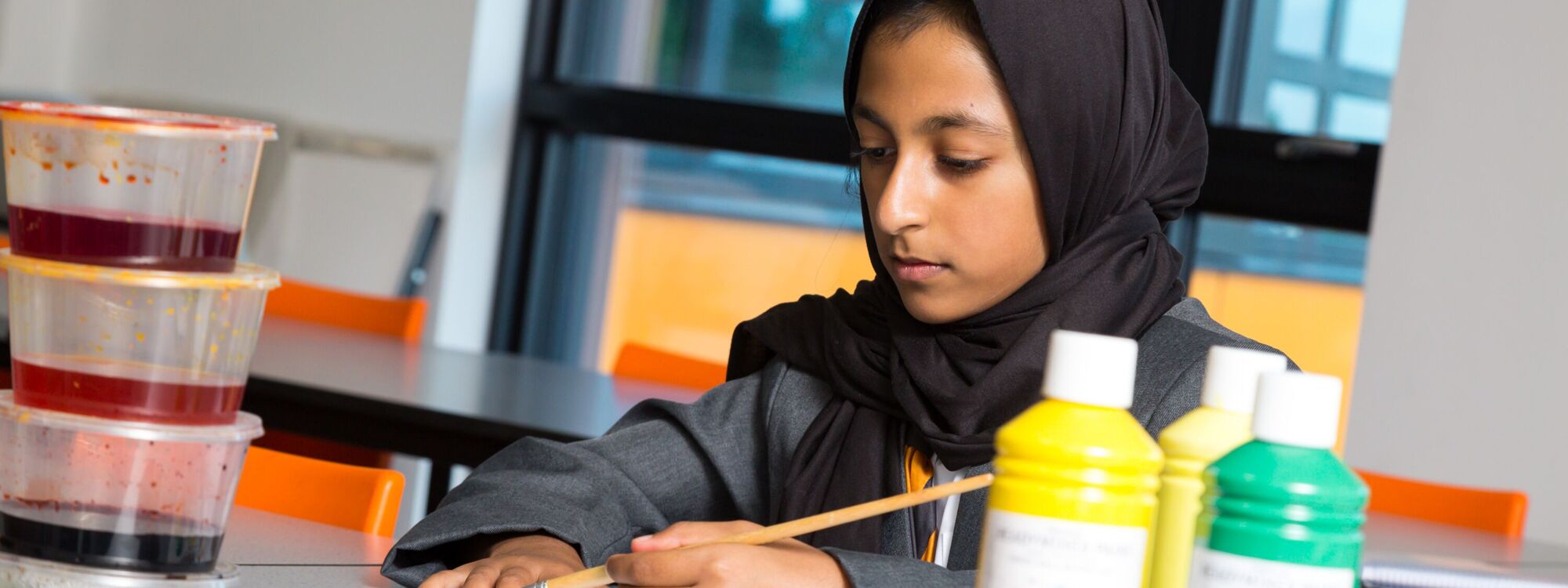- Home
- Curriculum
- Subjects
- Art and Photography
Art and Photography
Back to SubjectsVision
At MEA Central we believe all students have the right to access and enjoy Art in its many forms. Projects are designed to ensure students see themselves, feel represented and are introduced to a world beyond their immediate experience.
Throughout the Art curriculum students are exposed to a range of traditional and contemporary practices from both western and non-western traditions. In lessons we create spaces to acknowledge artists from a range of socio-cultural backgrounds which helps establish a platform for deeper questioning and analysis.
We support students in exploring different materials and their unique properties, but also in explaining and justifying their creative decisions. Art lessons help students to explore important concepts such as self-expression, citizenship and identity and increase social and cultural capital. Art is a vehicle for communication, and it is our intention that MEA Central students are able to articulate the greater purpose, or impact, of what they are making. The ultimate aim of the art curriculum is to nurture curious minds, and to equip all students with the skills they need to create personal responses to the world around them and to make explicit reference to a wide range of jobs in the creative sector in order to increase students’ awareness of future opportunities and the plethora of potential roles within these creative industries.
Key Stage 3 Overview
Throughout the Key Stage 3 Art curriculum students experience a wide range of creative disciplines including drawing, printing, painting, textiles, typography, collage, sculpture, photography, and the manipulation of materials to explore and compare their unique properties. Alongside supporting students’ application of key materials and techniques, we also offer opportunities to experiment, and encourage students to find value in expression and exploration, not just controlled or “perfect” outcomes. Later students are ready to engage with more challenging concepts and will begin to make more sophisticated links between the way different artists work and how that can be reflected in their own work. The understanding of context is integral to the curriculum, as it allows students to create work that has visual relevance and provides opportunities to discuss pertinent issues and develop connections. By the end of Key Stage 3 we want MEA Central students to understand the empowering potential of Art and Design, and to use this as a platform to steer their own projects at Key Stage 4.
Year 7 Curriculum
Year 8 Curriculum
Year 9 Curriculum
Key Stage 4 Overview
At Key Stage 4 we offer two GCSE courses; Art and Photography.
Art GCSE offers students the chance to explore their own themes with independence and rigour. Students are supported throughout but must use their own research and stimuli to develop ideas and responses. They will select appropriate artists and apply their influence to their own projects, building upon the vast array of practical skills experienced at Key Stage 3. An interdisciplinary approach is encouraged where students can combine different practices together to create thoughtful, imaginative outcomes. Experimental approaches to drawing are encouraged, as well as evidence of refined observational skills. The GCSE is designed to encourage students to find new ways to explore and refine their ideas, and to reflect on their own practice throughout.
Photography GCSE equips students with the technical skills they need to document, and make comment upon, the world around them using lens-based media. Not only does the course teach them how to use photographic equipment, including digital software tools, but also how to adapt technical processes to maximise meaning in their work, and to ensure their outcomes are successful. The course provides the opportunity to explore studio photography, location photography, portraiture, experimental image-making and installation. Students will become confident in the planning, execution and evaluation of photo shoots, embracing opportunities for interdisciplinary experimentation.
